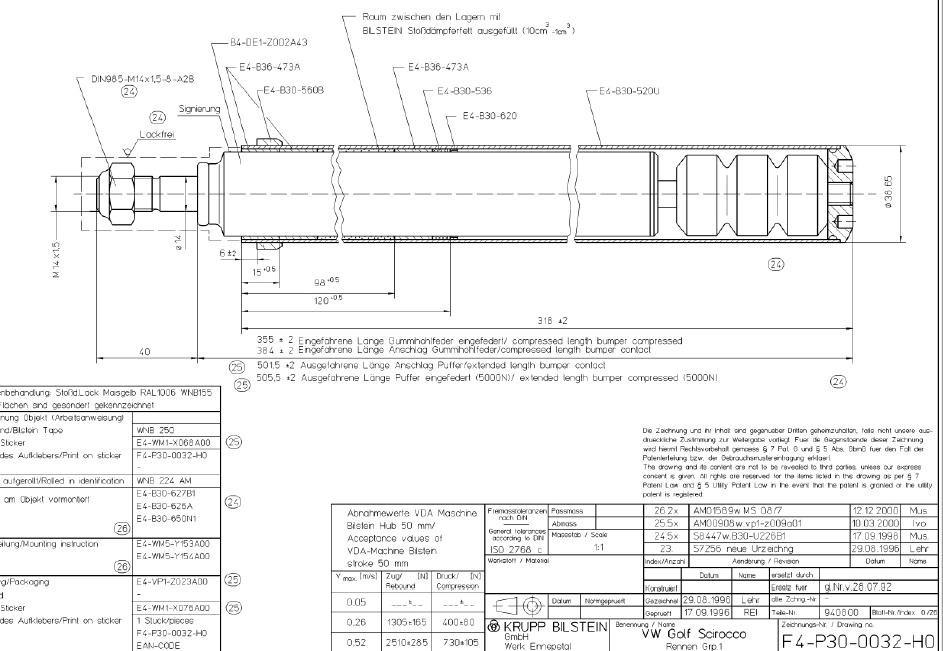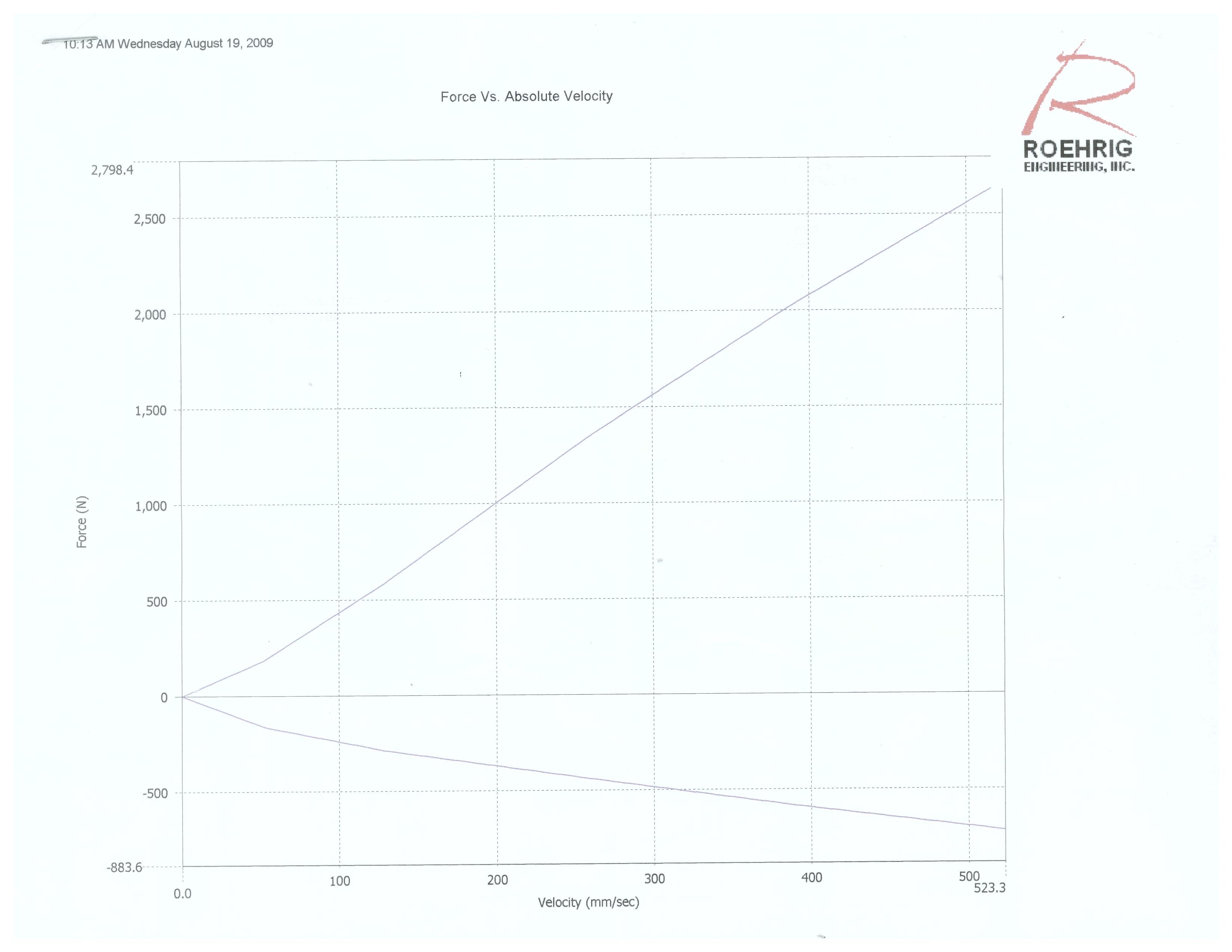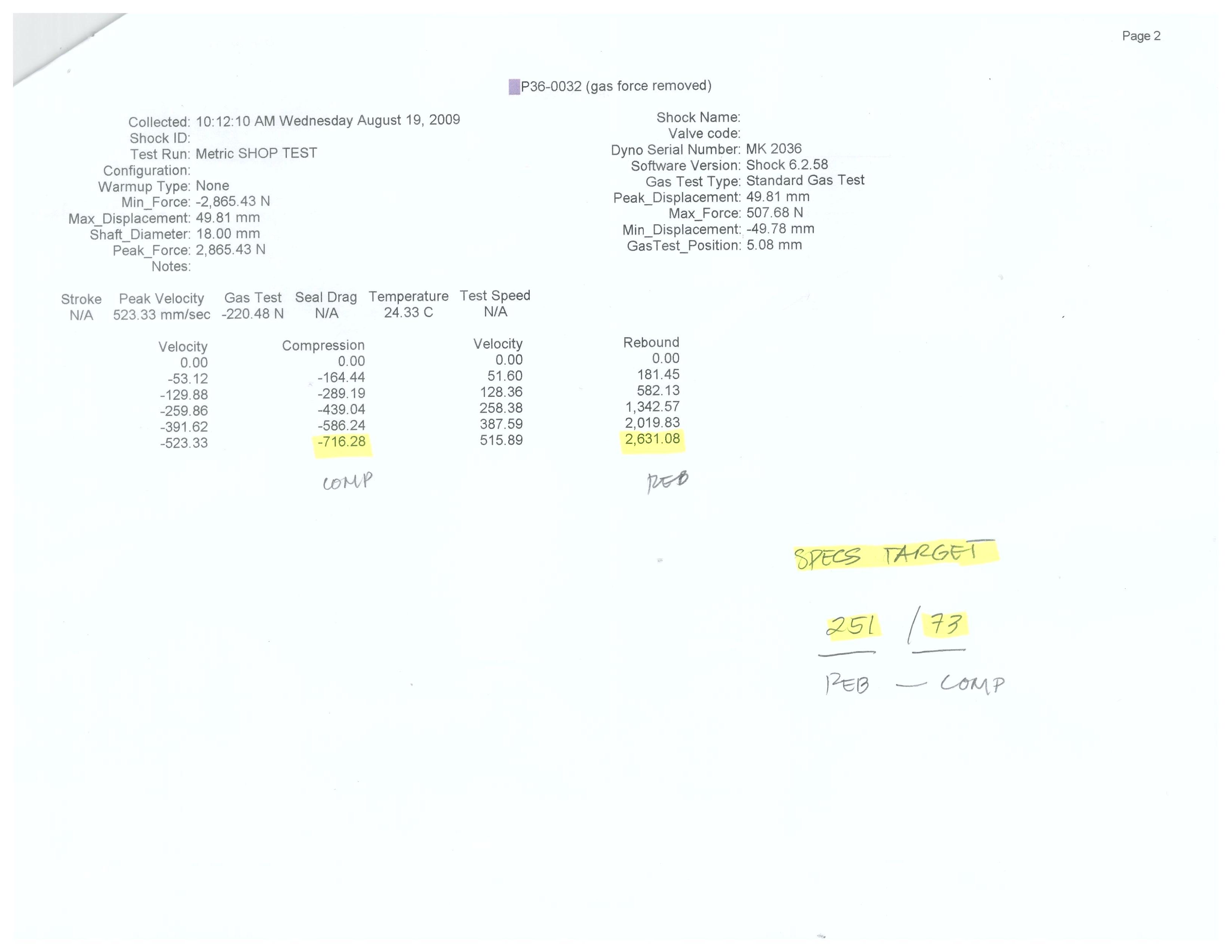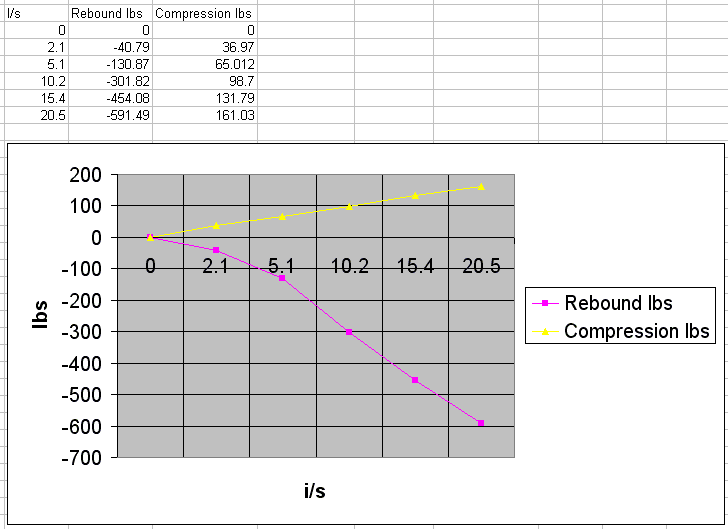spiggs
True Classic
I have mentioned in other threads that a Bilstein strut insert for the front of an early VW Rabbit will fit in a stock strut tube. Since insert options are few for the X1/9 I thought it would be beneficial to start a thread about using these and their suitability for the job. I'll start with specs and valving since I want to make sure these are up to the task before doing any fab work. Below is the spec sheet from Bilstein giving all critical dimensions.

As with almost all Bilstein shocks/struts these can be revalved and rebuilt. I have read that these particular units are linear only or perhaps can be made slightly digressive but have yet to confirm with Bilstein. Below are the dyno sheets from Bilstein and a graph I made converting the metric units to english.



Now this is where I need help from those who know shocks. I am going to use these in my budget GP build following the Steve H suspension setup philosophy. Since I am sure the spring rates for this (350-450R 550-650F) are far beyond what the stock valving is designed for I need advice on what to tell Bilstein for a revalve. Of course if these are wholly unsuited for the purpose I also need to know that to cut my losses. I think it would also be beneficial to those looking at street/performance options from mild to wild to hear how these would work with other recommended spring/swaybar setups. So to those who understand the above charts or have other relevant info I ask that you please chime in.
Vince

As with almost all Bilstein shocks/struts these can be revalved and rebuilt. I have read that these particular units are linear only or perhaps can be made slightly digressive but have yet to confirm with Bilstein. Below are the dyno sheets from Bilstein and a graph I made converting the metric units to english.



Now this is where I need help from those who know shocks. I am going to use these in my budget GP build following the Steve H suspension setup philosophy. Since I am sure the spring rates for this (350-450R 550-650F) are far beyond what the stock valving is designed for I need advice on what to tell Bilstein for a revalve. Of course if these are wholly unsuited for the purpose I also need to know that to cut my losses. I think it would also be beneficial to those looking at street/performance options from mild to wild to hear how these would work with other recommended spring/swaybar setups. So to those who understand the above charts or have other relevant info I ask that you please chime in.
Vince
